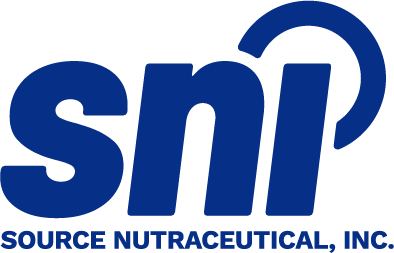On March 7, 2025, Health Canada released the Order Establishing Supplementary Rules Respecting the Sale of Natural Health Products Containing Ephedrine or Pseudoephedrine: SOR/2025-93, which builds upon the Interim Order published on May 17, 2024. This new order introduces more stringent regulatory oversight for natural health products (NHPs) containing ephedrine and/or pseudoephedrine and their salts as the sole medicinal ingredients.
The previous Interim Order applied only to non-combination products, meaning products that contained ephedrine or pseudoephedrine as the only active medicinal ingredient. It restricted the sale of these products at the retail level, allowing only pharmacists or those working under their supervision to sell them. Additionally, online sales of non-combination products required approval from a pharmacist before order fulfillment.
In the recent update, as published in Canada Gazette, Part II, Volume 159, Number 7, the restrictions have now been expanded to include both non-combination and combination products. This marks a significant shift in the regulatory framework to provide broader oversight on the sale and distribution of NHPs containing ephedrine or pseudoephedrine.
Continue reading the blog to learn more about these important updates.
Why Are Additional Restrictions Required?
Health Risks and Side Effects of Ephedrine and Pseudoephedrine
The use of ephedrine and pseudoephedrine in NHPs presents significant health risks, particularly when these substances are used improperly. Both are stimulants that impact the central nervous system, with potential side effects like increased heart rate, high blood pressure, stroke, heart attack, and seizures. These risks are amplified for individuals with pre-existing conditions such as heart disease, high blood pressure, or mental health issues. Ephedrine has been associated with severe health complications, including death, leading to its ban in many countries. Pseudoephedrine can also cause side effects like insomnia, dizziness, nervousness, and elevated blood pressure.
Potential for Abuse
Both ephedrine and pseudoephedrine have the potential for misuse due to their stimulating effects. Ephedrine is a precursor in the illicit production of methamphetamine, a highly addictive drug, while both substances are often abused in weight loss and performance-enhancing products. This misuse underscores the need for additional regulations and restrictions. These measures aim to limit abuse, while still ensuring that consumers who rely on these ingredients for legitimate health purposes can access them safely.
Therapeutic Benefits and Controlled Use
Despite the associated health risks, ephedrine and pseudoephedrine continue to be permitted in NHPs because of their therapeutic benefits. Ephedrine is used to treat conditions such as asthma and nasal congestion, while pseudoephedrine remains an effective decongestant for colds and allergies. Health Canada’s regulatory revisions are designed to allow these substances in NHPs while ensuring strict oversight. The goal is to minimize risks associated with improper use, allowing consumers to safely access products containing these ingredients when needed.
What are the restrictions as outlined in the Order?
The Order publication expanded from its original scope to include combination products containing ephedrine or pseudoephedrine in addition to non-combination products. Meaning, the restrictions initially published in the Interim Order now apply to both product categories, with the option to restrict combination products presented to pharmacists.
As outlined in the Interim Order and extended in the Order, NHPs containing ephedrine or pseudoephedrine are subject to the following:
Non-Combination Products
The Ministerial Order continues the restrictions from the Interim Order on the retail sale and distribution of non-combination products. These products cannot be sold at retail unless done by a pharmacist or someone directly supervised by one. Additionally, these products should not be easily accessible to the public, meaning they can’t be placed in open, self-selection areas of pharmacies where customers can freely pick them up.
Moreover, non-combination products cannot be sold to other retail sellers, except for pharmacies. In other words, wholesalers or distributors cannot sell these products to any retail store other than a pharmacy.
Combination Products
The Order introduces similar prohibitions for combination products, aiming to prevent misuse and diversion. These restrictions are in line with existing guidelines in several provinces. However, there are two key exceptions:
- Assisted Self-Selection: Pharmacists, or staff working under their supervision, can allow combination products to be sold in self-selection areas of a pharmacy, but only if a pharmacist is available to assist customers. This ensures that the pharmacist can guide customers in making appropriate choices for self-medication.
- No Self-Selection: Pharmacists can also choose to restrict access to combination products if there’s a concern about misuse. In this case, the products cannot be placed in open self-selection areas. Instead, they would be sold in a way that makes them less accessible to the public, requiring a pharmacist or their supervisor to directly oversee the sale.
Just like non-combination products, combination products cannot be sold to retailers other than pharmacies.
Retail Settings (Physical and Online)
The Order applies to both physical and online retail settings. For non-combination products, these can be sold at remote dispensing locations or through online pharmacies, but only if a pharmacist or someone working under their supervision is directly involved in the sale.
The same rules apply to combination products, where they can be sold through remote locations or online pharmacies as long as a pharmacist is available to assist the customer before the purchase. This assistance can be provided through phone, video, text, or other communication methods.
Final Remarks
In response to the growing concerns around the use of ephedrine and pseudoephedrine in NHPs, Health Canada’s recent regulatory updates seek to ensure stricter oversight of these substances. The Order Establishing Supplementary Rules, published on March 7, 2025, expands upon the Interim Order from May 2024, addressing the need for more robust controls over both non-combination and combination products containing these ingredients.
The expanded restrictions reflect the significant health risks associated with these stimulants, including increased heart rate, high blood pressure, and other severe side effects, especially for individuals with underlying health conditions. Moreover, the potential for misuse, such as the illicit production of methamphetamine and abuse in weight loss or performance products, has made these substances a target for additional regulation. While these ingredients still have recognized therapeutic benefits, such as treating asthma and nasal congestion, their use must be carefully managed to prevent harm.
By applying these restrictions to both retail and online settings, Health Canada aims to minimize risk while allowing consumers to access necessary products under professional supervision. These measures reflect a commitment to public health and safety, ensuring that ephedrine and pseudoephedrine can be used responsibly within the confines of regulated oversight.
SNI’s Support
Navigating Health Canada’s new regulations on NHPs with ephedrine and pseudoephedrine? Let us be your compliance guide! At SNI, we simplify the ever-changing landscape of NHP regulations, ensuring your products, whether non combination or combination, are always on the right track. Don’t let regulations derail you and partner with us to stay ahead of the curve.
💡 Book a discovery call today to streamline the process and succeed in the Canadian market!
📩 info@sourcenutra.com
FAQ:
Q1: Why did Health Canada update its regulations on ephedrine and pseudoephedrine in Natural Health Products (NHPs)?
Health Canada updated these regulations to address the serious health risks linked to ephedrine and pseudoephedrine, such as increased heart rate, high blood pressure, and the potential for strokes or heart attacks. These substances also have a misuse potential, including being used to produce methamphetamine.
Q2: What changes have been made in the new regulations compared to previous ones?
The new regulations expand the restrictions to include both non-combination and combination products containing ephedrine or pseudoephedrine. Previously, only non-combination products were regulated, but now both product types are subject to more stringent oversight to minimize misuse risks.
Q3: What restrictions apply to non-combination products under the new regulations?
Non-combination products containing ephedrine or pseudoephedrine can only be sold by a pharmacist or someone under their supervision. These products must be kept out of easy public reach, such as not being placed in open self-selection areas of pharmacies. Additionally, these products cannot be sold to anyone other than pharmacies.
Q4: Are there exceptions for combination products containing ephedrine or pseudoephedrine?
Yes, combination products can be sold in self-selection areas of pharmacies if a pharmacist is available to assist customers. If there is concern about misuse, the pharmacist can restrict access and require the product to be sold with more direct oversight.
Q5: Do these regulations apply to both in-store and online sales?
Yes, the regulations apply to both physical and online retail sales. For online orders, a pharmacist must be involved, either directly or through remote communication before the purchase is finalized.
Q6: How will the updated regulations impact consumers who rely on these products for health purposes?
Consumers can still access ephedrine and pseudoephedrine-containing products for legitimate medical use, but only through pharmacies with professional supervision to ensure safe usage. This helps reduce misuse risks while still allowing access to necessary treatments.
Q7: How do the new regulations align with global standards?
The new rules align with similar restrictions in other countries that also regulate ephedrine and pseudoephedrine due to their misuse potential. Health Canada’s updated approach supports international efforts to control these substances while maintaining their availability for legitimate medical use.
Q8: Where can I find more information about these regulatory changes?
For more detailed information, you can visit Health Canada’s official website or check the publication in the Canada Gazette.




